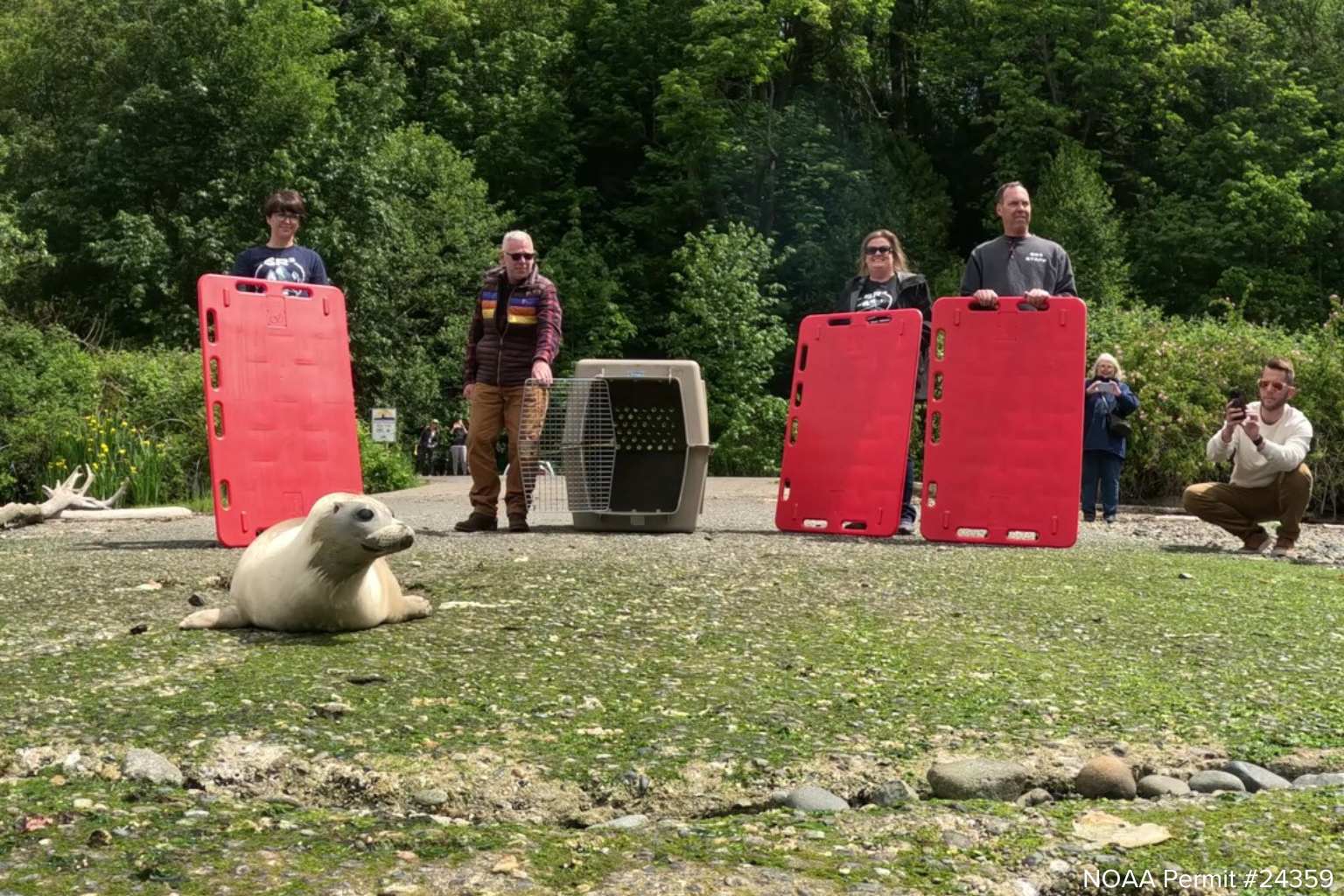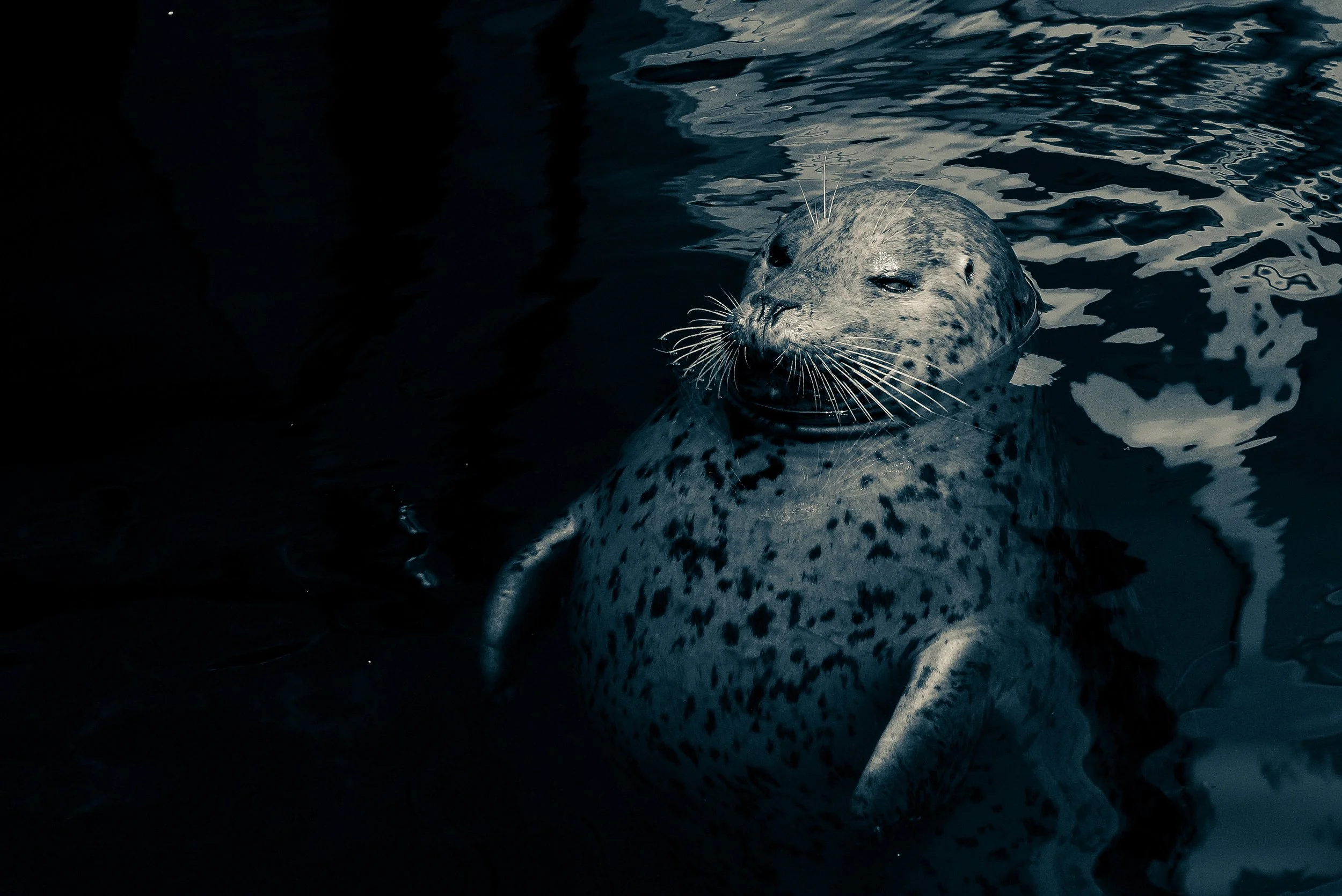sealife saved
Rescue group guards the health of salish sea marine mammals
Words by Kristina Avramovic Oldani
Photo: Adobe Stock / Hank + Tank
Casey Mclean and a group of about twenty onlookers gathered at the Fort Ward Park boat launch on the south end of Bainbridge Island last May. It was release day for a rehabilitated harbor seal pup who had been found starving at twelve pounds and suffering from lung worm at Shilshole Marina two months earlier.
“She was bleeding from her nose and was very thin,” said Mclean, executive director and veterinary nurse at the nonprofit organization Sealife Response, Rehabilitation and Research (SR3). “She was old enough to be on her own so we didn’t want to pick her up if she could fight it off. It turned out she couldn’t.”
SR3 took in the pup, naming her Dragon, and treated her at their Des Moines, Washington facility. Dragon weighed in at a healthy 54 pounds the day of her release. “She pulled through really well,” Mclean beamed. “So she’s nice and round now, as you’ll see. She doesn’t really have much of a neck, just as they should be.”
As its name suggests, SR3 works with marine animals in three capacities. It frees entrapped or stranded marine animals in the Puget Sound region, operates the Pacific Northwest’s only hospital dedicated to marine wildlife and conducts research on Salish Sea marine mammals, using the data it collects for conservation gains on behalf of the animals in its care.
A group of four hoisted a dog crate from the bed of a pickup truck and made their way toward the slope of the Fort Ward boat ramp. “They are pretty social out there,” Mclean said, gesturing toward the sea. “So we’re happy to get her back out. Down here to the left, there’s a seal haul out so we’re hoping she might find those other seals and reorient herself to the general area.”
Harbor seals live within a twenty to thirty mile range their entire lives. The boat launch is within that distance to Shilshole Marina, where Dragon was found. A nearby harbor seal community made it a perfect release spot for her.
“No breakfast, so she’s hungry,” Mclean continued. “We do that so they are inspired to go hunt for food. She was not happy about it though.”
Mclean and her colleagues stood flanking the dog crate, creating a clear line of travel for Dragon, whose whiskered face we glimpsed for the first time as they unlatched her door. Out she plopped. Her round body was tan with dark brown spotting. A red hat tag marked “1” that had identified her at a glance in the hospital was still affixed to her head. Dragon began waddling down the slick ramp.
She glanced from side to side at her release witnesses, who maybe, like me, were also crying behind their sunglasses. She scooted past the last of us at the water’s edge, paused and turned back briefly, then slipped into the sea where she was instantly transformed into the most graceful little neckless puddle of fat and spots I’d ever seen swimming in the clear salt water.
A month after Dragon’s release, I was with Mclean and a small group on a behind-the-scenes tour of SR3’s facility in the Des Moines Marina. The sound of a five-piece kazoo ensemble met my ears as we approached the pup tent. Inside, I strained for my first view of the musicians—a quintet of harbor seal pups in various stages of rehabilitation, singing for their supper.
I worked my way through the tent, taking in each of the five harbor seal pups in residence. The coloration, age, and care requirements varied from pup to pup, but each was hungry and crying out for food during our evening tour.
This cry, which a harbor seal mother can hear and recognize as her pup’s from as far as a kilometer away, is often misconstrued as a distress cry, leading a lot of well-meaning people to “rescue” harbor seal pups who simply need to feed.
The pups have to be separated from each other at this stage in their recovery. Some carry contagions, and all are vulnerable when away from their mothers and natural environments. So they are kept in separate blue crates, furnished with boppies and heat lamps, until they are weaning age and ready for the communal pool, where they learn to fish and compete for food.
By the end of my tour, SR3’s three-pronged approach presented its strength. Their vigilance as researchers, watching disease and mortality events ebb and flow with environmental fluctuations, positions them as expert guardians of Pacific Northwest marine environments. Their experience with marine populations and health concerns prepares them to be impactful when the stakes are high, as when endangered species come into their care. Their work centers the wellness of Northwest marine environments in regional conservation policy, extending their impact far beyond the marine animals they’ll directly care for this year.
I asked Mclean why she does it. “Humans’ everyday actions, whether that be as individuals or big industry, greatly impact the marine environment. It is our collective responsibility to correct our mistakes that are causing these animals to suffer,” she replied. She told me that the health of our marine ecosystems were indicators of our own good health, or lack of it. Ultimately, she said, “I want all future generations to get to see healthy whales, seals and sea lions thriving in the Salish Sea.”
Our fates are intertwined, held in common by the salt water that fills the bottom of this glacier carved bowl we call home. I took a second round through the nursery tent, listening for nuances in the pups’ voices, before filing out with the rest of the group. I silently wished them well, thanking Mclean, her colleagues and her donors for loving the depths of this place deeply.




Photos courtesy of Sealife Response, Rehabilitation and Research
if you encounter marine mammals in distress...
Casey Mclean, marine biologist, veterinary nurse and executive director at SR3, is eager to get the word out: the best thing we can do for a marine animal in distress is keep our distance and call in the experts. “Alerting others who may have offleash dogs or young kids to the presence of the animal is helpful as well,” she added.
“People have a tendency to want to rush in to help the animal. Unfortunately that could lead to further harm, both for the animal and the person. Marine mammals, especially young ones, are incredibly cute and it's hard to resist rushing in to help, but calling the Stranding Network and staying back is the best thing you can do.”
If you believe a marine animal is in distress or injured, contact the West Coast Marine Mammal Stranding Network at 1-866-767-6114.
If you find an entangled whale along Washington, Oregon or California, call the NOAA Fisheries Entanglement Reporting Hotline at 1-877-SOS-WHALE (1-877-767-9425). Prompt reporting is the best way to assist an entangled animal.
If you see a sea otter on the beach in Washington, please contact the Washington Sea Otter Stranding Hotline at 1-877-SEAOTTER (1-877-326-8837).

